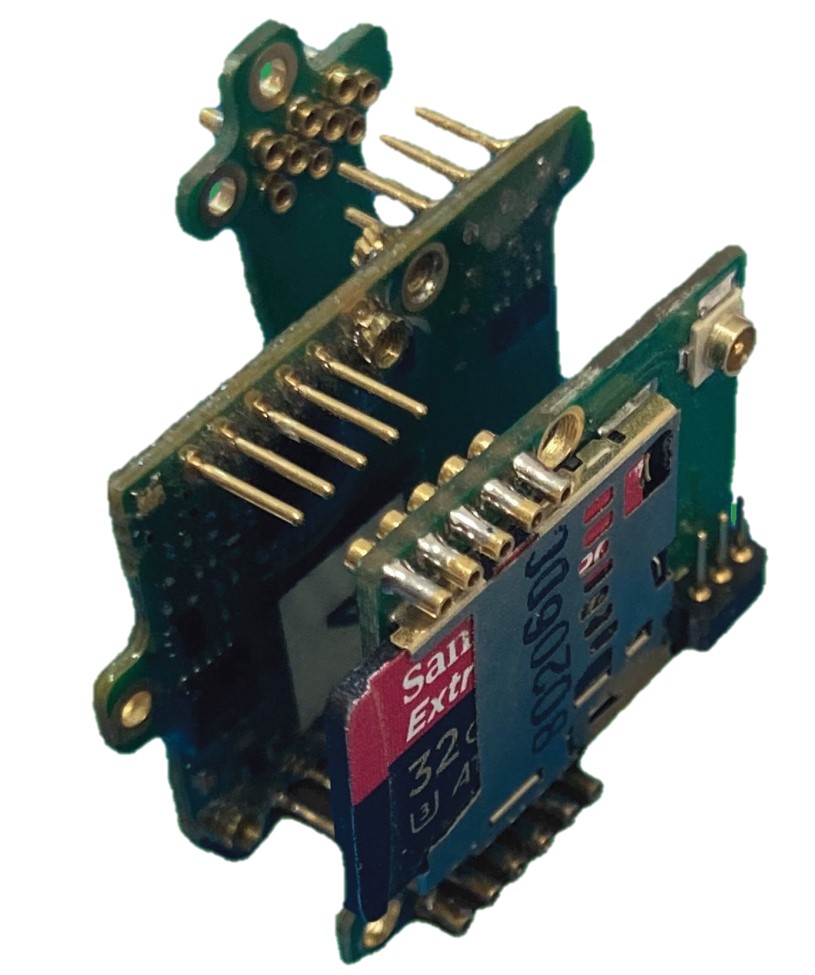MS7 is a 16-channel neural logger designed for use with aquatic subjects. Its main advantage is that it will not sustain significant damage if it becomes wet or submerged.

Electrophysiology experiments in aquatic animals
Conducting electrophysiology experiments on fish and other aquatic animals requires one to have a “recording chamber” on the animal that will protect the electronics from exposure to water. This is because if the wires that carry signals from neural electrodes are submerged, the signals will be conducted away by the water and thus lost.
Experience in labs that work with fish has shown that having a watertight recording chamber is not always sufficient to protect the neural logger from damage. When preparing and handling aquatic animals, work surfaces are often wet, and the watertight seal of the recording chamber might fail occasionally.
MS7 is a variant of Deuteron’s 16-channel neural logger for small animals that is adapted to be used in wet environments. Neural loggers cannot be made fully waterproof since exposed conductors must exist to provide electrical connection to the electrodes, the memory, the battery and the radio antenna. The MS7 system as a completely sealed main circuit board that makes all the needed electrical connections using 27 exposed pins. The pins are made of solid 14-carat gold and these do not corrode even in seawater. Connection to the electrodes and the memory card is made using demountable adapters that are not waterproof. These adapters can be easily replaced, and are very low cost. For example, the adapter that holds the micro-SD memory card costs about $12.
Typically, a logger is supplied with six of each kind of adapter; five of each adapter type are thus spares. If a logger system does get wet, one can generally immerse the system in alcohol (isopropanol is recommended) dry it, and the system will be undamaged. After a prolonged exposure to water, or exposure to more corrosive liquids, the adapter boards may have corrosion damage. In such a case, one can easily replace the adapter with a spare one using only a screwdriver. To do so, undo the two screws, unplug the adapter, replace it and replace the screws.
Radio Propagation in water
Neural loggers communicate with a host computer over a radio link. The radio link is used for synchronization, to change the logger’s settings, to start and end a recording session, and to run periodic checks of the system while a recording progresses. If the logger cannot communicate by radio, a recording will continue as normal, but obviously the radio-depended functions will not be available until the logger re-enters radio range.
Radio signals do not travel well through water, but some radio frequencies can propagate better than others. For example, the 2.4GHz band used by WiFi and Bluetooth, is similar in frequency to the microwaves used in microwave ovens, which is very strongly absorbed by water. Deuteron’s loggers use the 915MHz unlicensed ISM band radio frequency (868MHz in Europe). This frequency band propagates relatively well in water. While the radio range of a Deuteron logger is typically more than 40 meters in air, this is reduced to about 50cm in clean fresh water, and about 20cm in seawater. While this range is not great, in a typical aquarium, aquatic animals are usually no more than 50cm from a wall of the aquarium or the surface of the water, so in many cases, especially for freshwater subjects, radio communication can be maintained throughout an experiment in which the subject moves freely inside an aquarium. When working with seawater, similar experiments can be conducted, but will be limited to smaller aquaria.